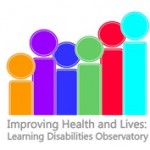
Avoiding unnecessary hospital admissions for ‘ambulatory care sensitive conditions’ (ACSCs), reduces costs and should provide good outcomes for patients. ACSCs are defined as those where ‘effective management’ at the primary care level should avoid admission to hospital.
Many of the conditions identified as ACSCs, for example convulsions and epilepsy are more common among people with learning disabilities. Previous studies have recommended additions to the current NHS ACSC list to reflect conditions relevant to people with learning disabilities, for example constipation, gastro-oesophageal reflux disease, osteoporosis and schizophrenia.
The authors of this current study set out to explore whether looking at rates of unplanned (emergency) admissions for ACSCs could provide helpful evidence about patterns of community based health care for people with learning disabilities
They looked at the number of admissions, associated bed use, and which conditions were the most prominent causes. In addition they were interested variations in these patterns over time and in different parts of the country and comparing their findings for people with and without learning disabilities. The data they used came from four years of English Hospital Episode Statistics (HES) from 2005 to 2009 which enabled them to identify people with learning disabilities from the diagnoses given to each individual patient.
What they found was:
- A higher rate of preventable admissions for emergencies in people with learning disabilities – approximately 8 out of every 100, whereas for those without learning disabilities, this was approximately 5 out of every hundred.
- A difference in the age profile of preventable emergency admissions. For those without learning disabilities, preventable emergency admissions increased with increasing age, whereas for those with learning disabilities, these occurred for adults of all ages.
- The most common cause of emergency admission for people with learning disabilities was convulsions and epilepsy, with other common causes being constipation, diabetes and influenza/pneumonia.
Interestingly, they found that hospital admissions for emergencies that could be prevented tended to be longer than ordinary admissions, which was the same for people with learning disabilities and those without.
The authors draw attention to some of the problems with their findings which relate to the unreliability of the data. They point out though that their figures for people in the learning disabilities group are likely to be under-estimates, based on experience from previous studies.
They suggest that the fact that the significantly increased likelihood of people with learning disabilities being admitted to hospital as an emergency for an ACSC points to the fact that primary care services are not as effective for this group as for those without learning disabilities.
They make recommendations for closer monitoring of the data and strengthening of data collection to enable firmer conclusions on local variations to be drawn as well as recommending that GPs and community learning disabilities teams develop local registers of people with learning disabilities to enable monitoring of condition-specific admission patterns.
In addition to improving monitoring, they recommend in-patient units create routine notifications of emergency ACSC for every discharge of a patient with learning disabilities to go to the GP and community learning disabilities team which would enable a review of the person’s Health Action Plan.
They also recommend where there has been an emergency admission for people convulsions this should trigger a review of their epilepsy care by a specialist neurologist.
Hospital Admissions That Should Not Happen: Admissions for Ambulatory Care Sensitive Conditions for People with Learning Disability in England, Glover G & Evison F, Improving Health and Lives, 2013
